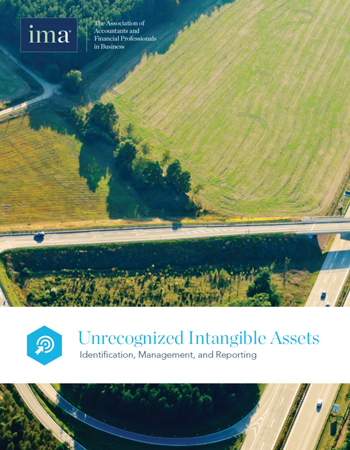Unrecognized Intangible Assets

Intangibles are those assets that are not physical in nature. They fall into two categories: those that are “recognized” and have an attributed value in the financial statements and those that are unrecognized for financial reporting purposes.
This Statement on Management Accounting (SMA) focuses on the growing impact of the unrecognized portion of intangible corporate assets. These items have grown to become a major source of value to public corporations. They contribute to competitive capacity and they form a critical aspect of an organizations’ sustainability1 into the future. While these type of assets fail to meet the criteria for recognition under current reporting standards, the identification, assessment, management, control, retention, and nurturing of these assets is necessary for an organization to maintain its capacity to operate.
Typically, statutory reporting lags that desired by stakeholders. Progressive organizations tend to assess their stakeholders’ need for information and voluntarily disclose that which is “over and above the minimum required”. Finance and accounting professionals, in their roles both as advisors to management and in ensuring the transparency (i.e., visibility to more detailed and support information) of external reporting, must be concerned with an organization’s ability to remain a going concern, to compete e!ectively, and to protect its assets. This SMA identifies the importance and breadth of unrecognized intangibles and presents issues and concerns related to them. Various types of unrecognized intangible assets are discussed and approaches to managing and reporting these assets are suggested.
